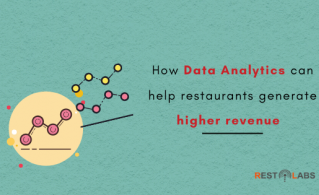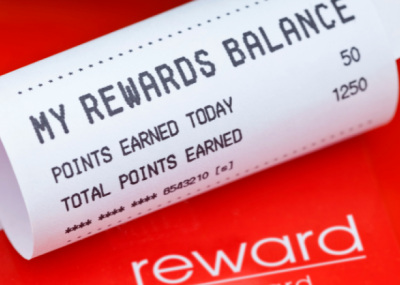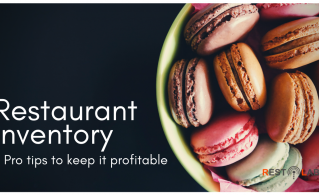Key Takeaways
The pandemic has led to changes in businesses all across the globe. When it comes to the restaurant industry, one of the major developments has been the massive rise in contactless ordering. The concept itself was virtually unheard of before the pandemic but today it is well on its way to becoming mainstream!
As the usage of food delivery apps has doubled due to the covid-19 crisis, it’s evident that contactless ordering is a godsend in today’s scenario and has made people’s lives easier. However, there’s one segment of third-party food delivery that we need to be paying more attention- the risks associated with food safety.
A survey from US foods revealed that 28% of food delivery partners from giants such as UberEats and Grubhub have admitted to taking food from a delivery. Over half the drivers that were surveyed confessed that they were tempted by the aroma of the food they were delivering, but didn’t act on the craving.
To ensure that your customers are provided with a satisfying, safe and hygienic food delivery experience, it’s important to monitor delivery staff constantly. You also need to keep in mind that every food order should reach your customers with a safety seal.
What are the food safety risks associated with third-party delivery vendors?
In the last one year, restaurants all over the world have adopted a multitude of new practices and steps aimed at ensuring food quality and customer safety. Naturally, this same commitment towards customer safety needs to be maintained once a food order leaves restaurant premises as well. Any failure at doing so reflects poorly on a restaurant and its brand image.
With more and more reports of delivery drivers pilfering from food orders, you need to assess the food safety risks that come about with such an act. While swiping a couple of French fries can easily go unnoticed, it is a huge risk of food contamination.
All ready to eat orders and meal kits need to be protected from any kind of tampering while they’re in transit. This can be done by creating a clear set of safety guidelines to first establish the food safety risks that can come up in transit, and then how these risks can be dealt with.
In response to food safety and quality concerns, the state of California launched the Fair Food Delivery Act in September 2020. This legislation aims to create guidelines that govern how food delivery services handle orders. It also ensures that each food delivery platform secures an authorization agreement from a restaurant before delivering any food orders.
Why is packaging important?
The right kind of packaging can largely decrease the chances of food contamination. This ensures your customers’ protection. Big players in the QSR world such as Taco Bell and BurgerFi are well-known for providing all food orders in tamper-proof packaging. So, how can your restaurant use packaging to prevent any food safety risks?
- Ensure that the containers you use for food delivery are sturdy and maintain structural integrity during transport. This way, you can avoid any physical or chemical contamination that could spoil the contents of the food order. The packaging material needs to be travel-friendly and it should be able to resist extreme humidity or heat.
- Go out of your way to double-check that your delivery partners use insulated boxes that are built to keep food safe and warm while in transit, as well as dry ice or frozen gel packs for cold foods.
- Hot foods and cold foods need to be stored in different compartments to ensure that they remain intact while being transported. While it may be tempting to settle for the cheapest packaging material you can find, refrain from doing so. Flimsy, cheap material can often lead to food spoilage very quickly and lead to a negative customer experience.
- Using tamper-proof packaging with seals is the best possible way to ensure food safety. While certain food delivery services provide such packaging, you could look into making it part of your restaurant’s packaging as well.
Clear communication and contractual terms are the need of the hour
One of the simplest and most effective steps to ensure food safety is to use labels. These little stickers or notes can be used for the benefit of customers as well as delivery drivers. For instance, labels can instruct customers on things they can do to ensure safe storage and easy preparation such as “Keep refrigerated” or “Microwave leftovers for a minute before consumption”. Of course, these labels can also be used to offer a quick summary of allergen information. Similarly, you could use labels to communicate with delivery drivers on how to keep food orders in the best shape while in transit, by prescribing a certain transport temperature.
Labels serve as easy tools to assure customers about food quality and to show that your restaurant strives to provide them with the best possible customer experience. While they also help in communication with delivery drivers, you still need to take a couple more steps.
Before partnering with third-party food delivery services, it is best to do some research about their way of handling food orders and their attitude towards customer service in general. Find out what their standards are for food safety requirements and whether they adhere to these strictly.
It is essential to verify that your delivery partners utilize optimal equipment for food transport such as insulated transport carriers and maintain cleanliness in their delivery vehicles.
Further, put in writing the safety guidelines you expect all delivery drivers to follow and make it easily available to them. Setting down contractual terms for food safety ensures that all guidelines are followed diligently, ensuring the well-being of everyone involved in the food delivery process.
As we inch closer and closer to the end of the pandemic, one thing is clear- contactless delivery isn’t going anywhere. With the ever-growing use of food delivery services, your restaurant needs to make sure that its customers are provided with scrumptious dishes that reach them safely. By ensuring that no malpractices take place in the realm of food safety and food quality, you’re doing your bit when it comes to looking out for public health.
Frequently Asked Questions


.gif)
.png)







